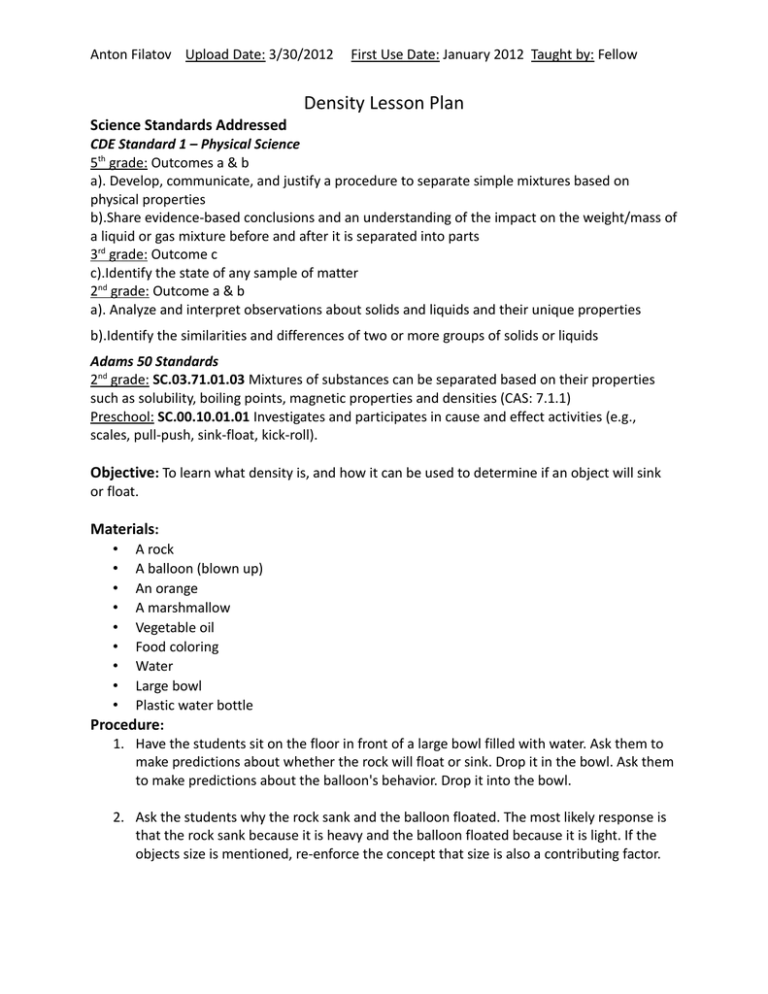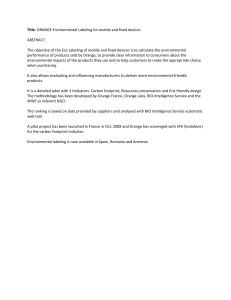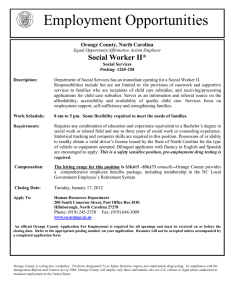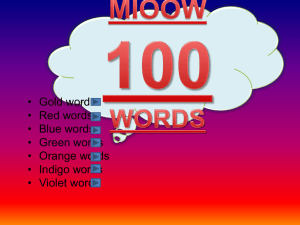Density Lesson Plan Science Standards Addressed
advertisement

Anton Filatov Upload Date: 3/30/2012 First Use Date: January 2012 Taught by: Fellow Density Lesson Plan Science Standards Addressed CDE Standard 1 – Physical Science 5th grade: Outcomes a & b a). Develop, communicate, and justify a procedure to separate simple mixtures based on physical properties b).Share evidence-based conclusions and an understanding of the impact on the weight/mass of a liquid or gas mixture before and after it is separated into parts 3rd grade: Outcome c c).Identify the state of any sample of matter 2nd grade: Outcome a & b a). Analyze and interpret observations about solids and liquids and their unique properties b).Identify the similarities and differences of two or more groups of solids or liquids Adams 50 Standards 2nd grade: SC.03.71.01.03 Mixtures of substances can be separated based on their properties such as solubility, boiling points, magnetic properties and densities (CAS: 7.1.1) Preschool: SC.00.10.01.01 Investigates and participates in cause and effect activities (e.g., scales, pull-push, sink-float, kick-roll). Objective: To learn what density is, and how it can be used to determine if an object will sink or float. Materials: A rock A balloon (blown up) An orange A marshmallow Vegetable oil Food coloring Water Large bowl Plastic water bottle Procedure: 1. Have the students sit on the floor in front of a large bowl filled with water. Ask them to make predictions about whether the rock will float or sink. Drop it in the bowl. Ask them to make predictions about the balloon's behavior. Drop it into the bowl. • • • • • • • • • 2. Ask the students why the rock sank and the balloon floated. The most likely response is that the rock sank because it is heavy and the balloon floated because it is light. If the objects size is mentioned, re-enforce the concept that size is also a contributing factor. Anton Filatov Upload Date: 3/30/2012 First Use Date: January 2012 Taught by: Fellow 3. Introduce two new objects: the marshmallow (light) and the orange (heavy). Ask for predictions of their behavior. Drop both objects into the water. Both of the objects should float, so weight is not the only determining quality of floating behavior. Explain to the students that whether an object floats or sinks is determined by a quality called density. Explain that density is the combination of weight and size. Objects that are big and light (balloon) will generally float, while objects that are small and heavy (rock) will generally sink. Explain that the sinking objects have high density, and the floating objects have low density. For more advanced students: Explain that an object's density is independent of the size of the object, and for any given material density is a constant. Check student understanding by asking them to determine the relationship between the density of a marshmallow and a rock, or a rock and a balloon. 4. Peel the orange. Elicit student theories about the behavior of the peeled orange in water. Demonstrate that the peeled orange will sink. Ask the students to theorize what the peel will do. Leading questions: The whole orange floated. When we took the peel off, the orange sank. What will the orange peel do by itself? Demonstrate that the orange peel has lower density than the orange, and will float. Explain that the orange peel is made up of different material than the orange, and when it is wrapped around the orange it will help it float. 5. Have the students break up into small groups, according to their tables, and ask them to come up with a list of other things that sink and float, with at least 3 objects in each category. Discuss as a class, eliciting students ideas about the density of various objects (high or low) and correcting the discussion as necessary. 6. Have the students gather around you once more. Tell them that density is a property of all matter, not just solids. Tell them that you will demonstrate that liquids have density too. 7. Fill the plastic bottle about half way with water. Ask the students what color we should make the water (blue will be the overwhelming choice every time). Put a few drops of food coloring into the water. Ask the students what they think will happen when we pour some oil into the water. Go ahead and fill up the rest of the bottle with oil. The liquids will form a clearly defined boundary. Tell the students that the oil is floating on top of the water. Check student understanding by asking which has higher density, the water or the oil. 8. Pass the bottle around, asking the students to tilt it in various directions and observe how the oil always stays on top of the water layer. 9. By now, you'll have received numerous requests to shake the bottle up. Ask the students what they think will happen once you do shake up the bottle. A range of answers is possible. Shake the bottle, and set it aside. In a minute or so, the liquids will separate back into the two well defined layers. Explain that density is a good way to separate certain mixtures. Anton Filatov Upload Date: 3/30/2012 First Use Date: January 2012 Taught by: Fellow 10. Have the students return to their desks and write down something about what they learned today. Ask them to share their discoveries if they want. 11. If time permits, reinforce the concepts introduced by watching a Magic School Bus video on density




